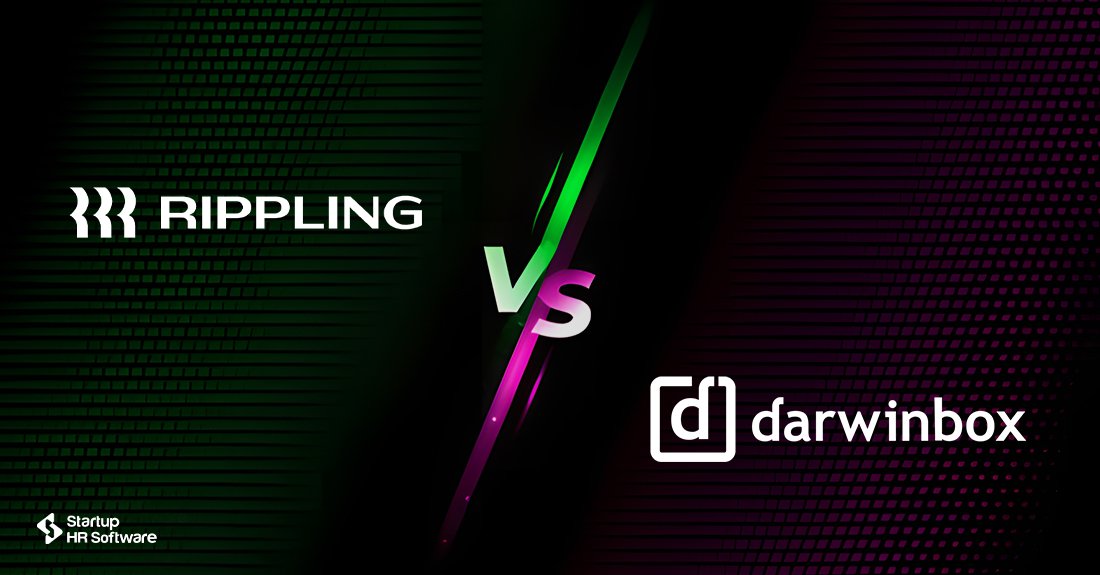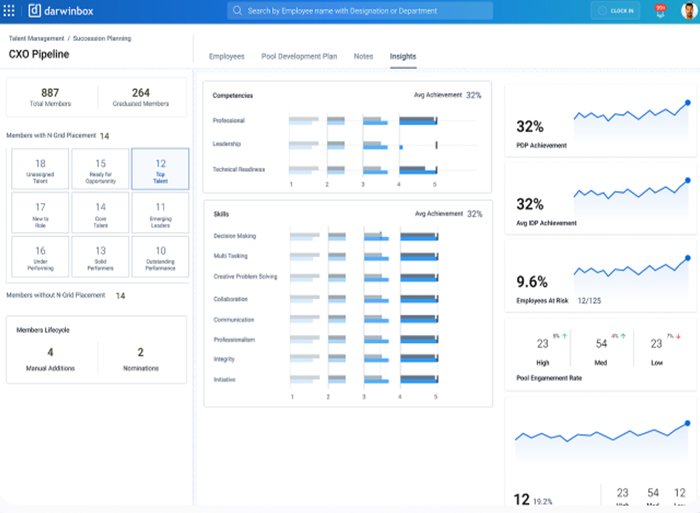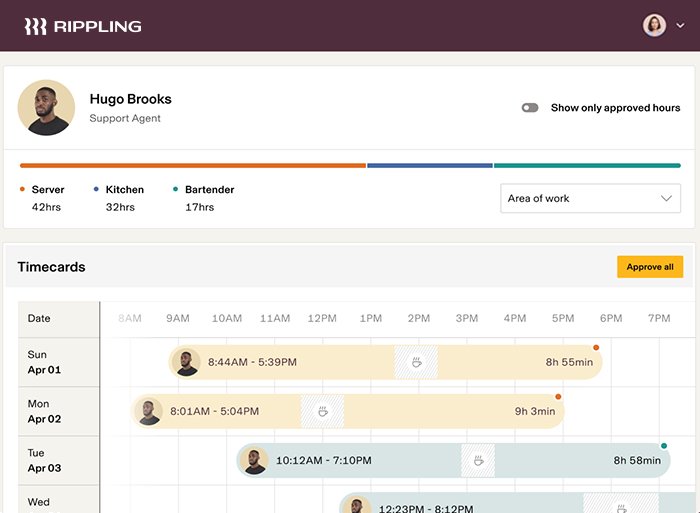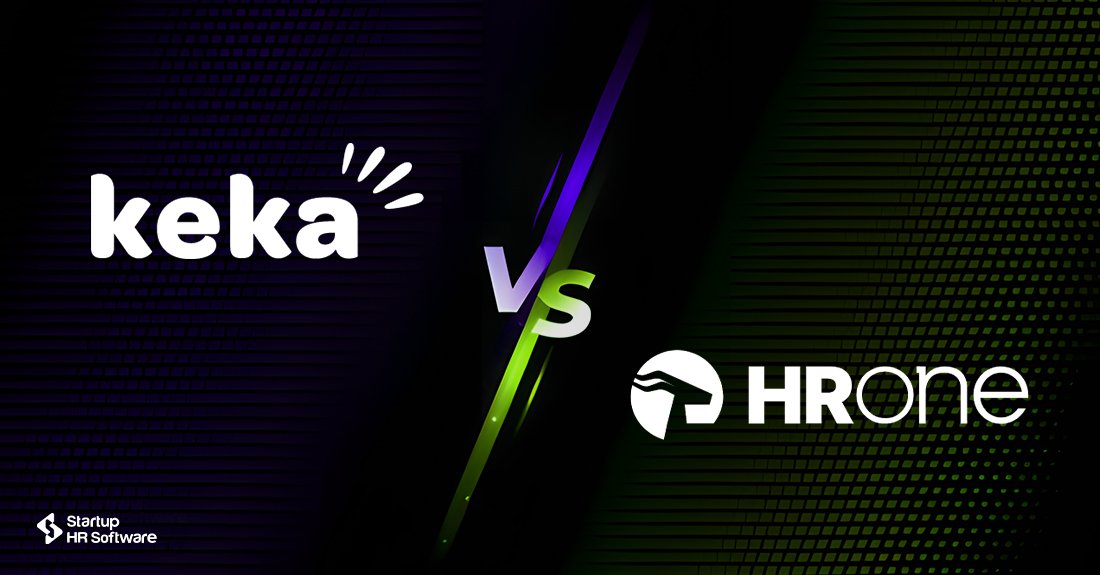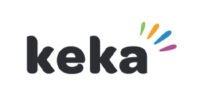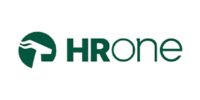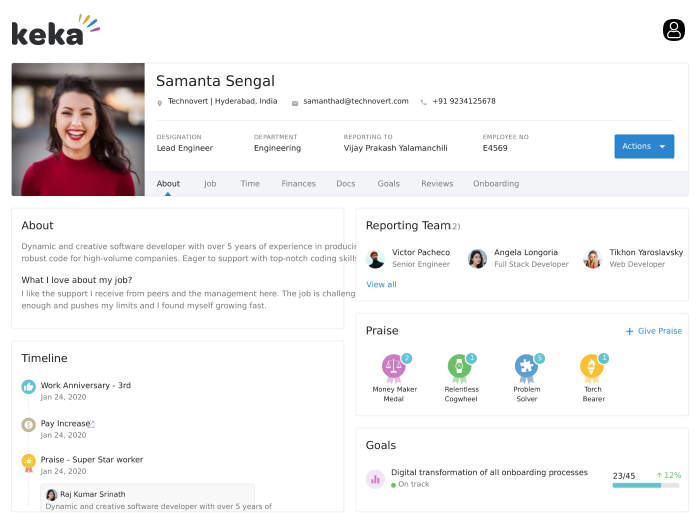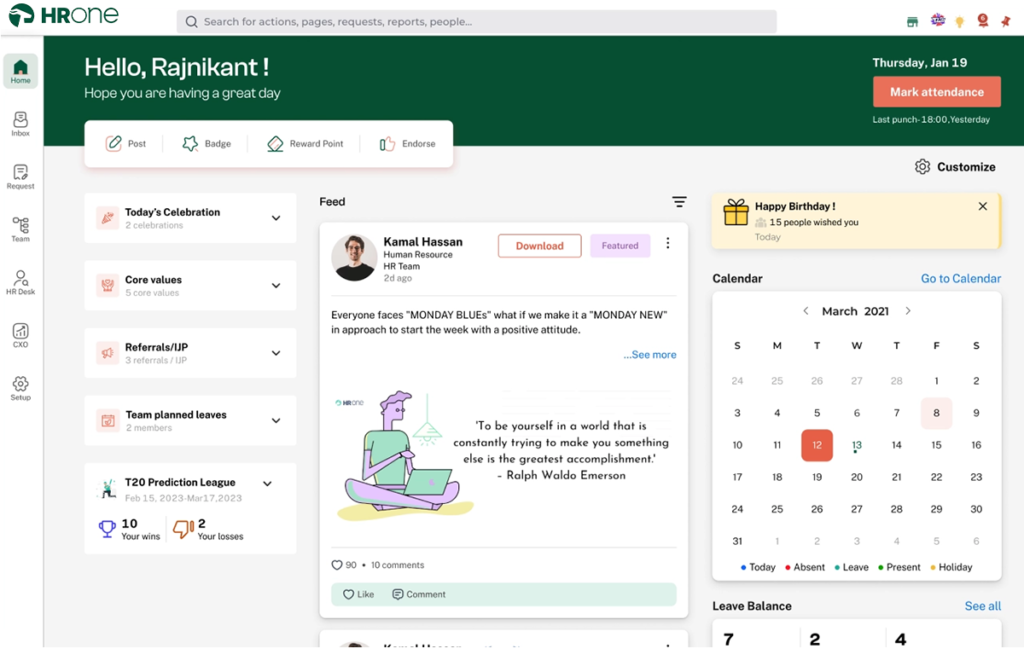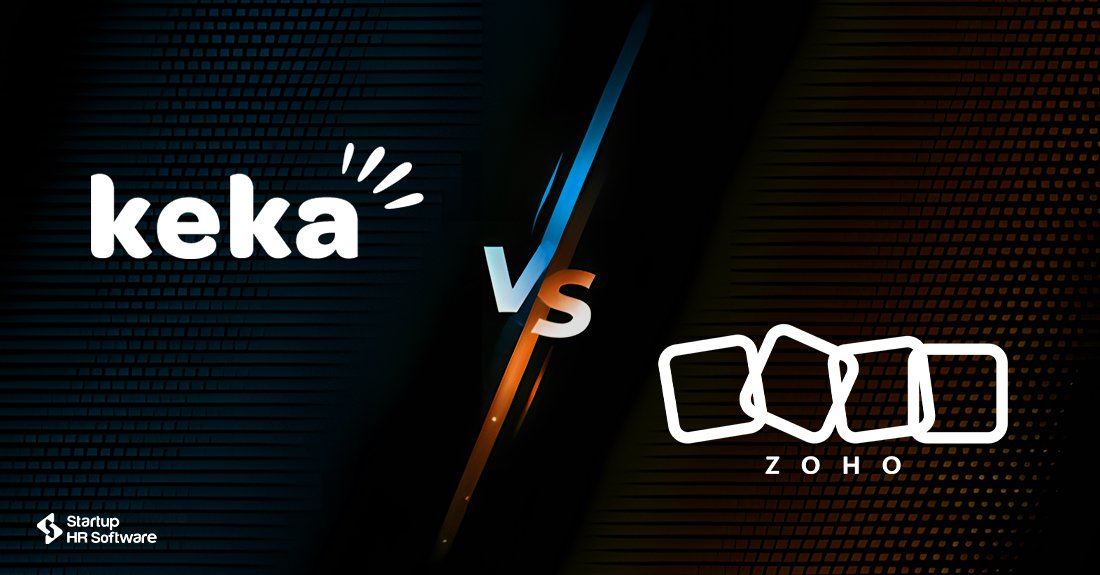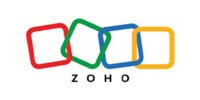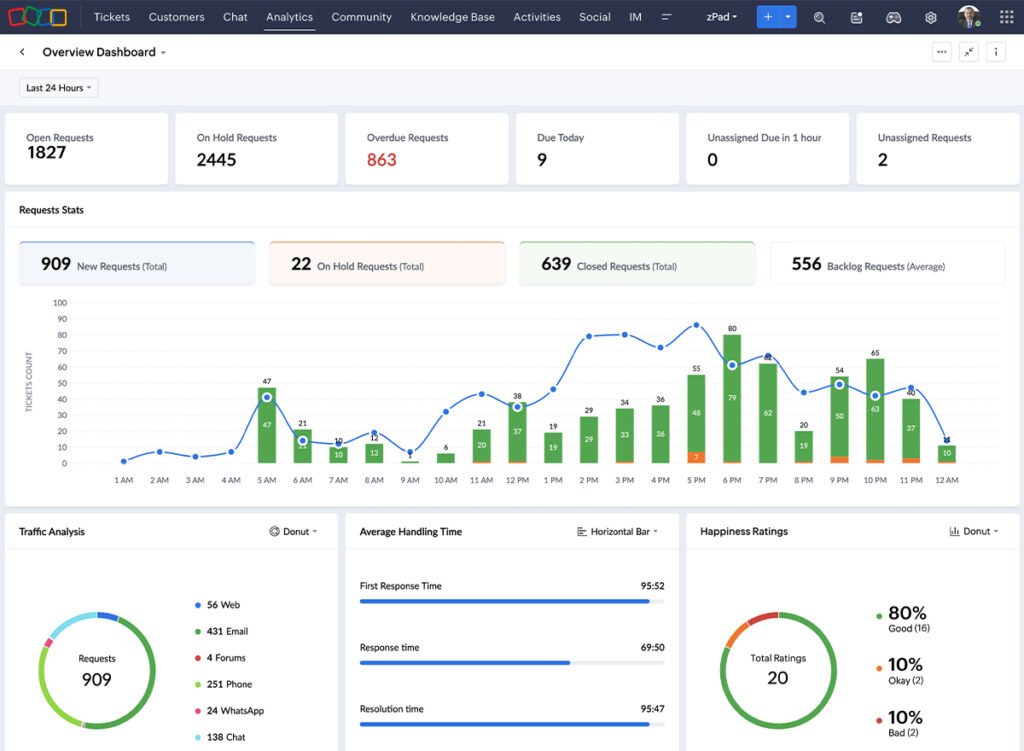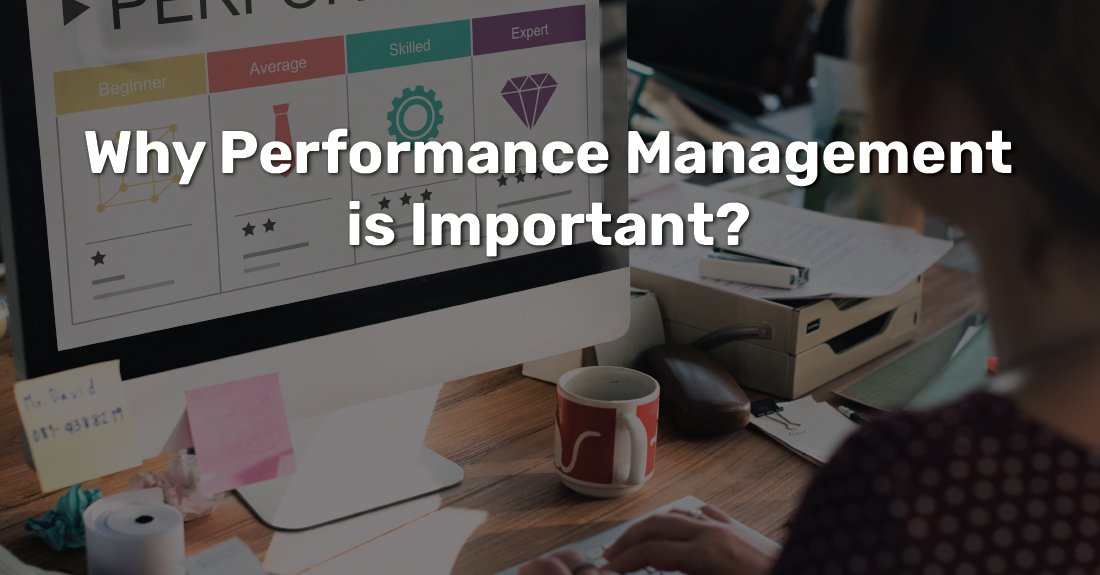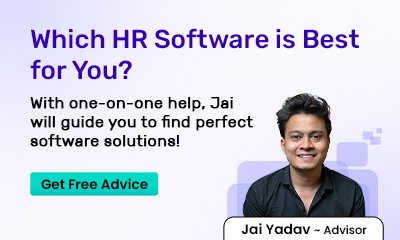In today’s fast-paced business environment, it’s imperative to manage HR and IT operations effectively. Finding the right software for your organization can be challenging, especially with so many options available. Among the top contenders in this space are Rippling and Darwinbox are two powerful platforms that offer comprehensive HR and IT management capabilities. What is the difference between these two giants? We’re going to compare Rippling and Darwinbox in this blog, exploring their features, benefits, and potential downsides. Whether you’re a small startup or a large enterprise, our goal is to help you make an informed decision about which platform aligns best with your business needs. Discover which solution could drive your company forward and streamline your operations.
Product Summary
![]()
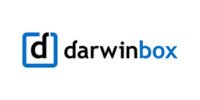
DARWINBOX
The Darwinbox platform is a modern-day, mobile-first, cloud-based HRMS designed for large companies to attract, engage, and nurture their most valuable resource – their employees. The system is an integrated human resources management solution that streamlines employee lifecycle activities (Hire to Retire). As a leading enterprise product provider, we offer powerful features that are built with a clear focus on intuitiveness and scalability. Darwinbox’s mission is to engage, empower, and inspire employees, as well as automate and simplify all HR processes for enterprises. With this unified platform, over 350+ leading enterprises manage their entire employee lifecycle.
Here’s how Darwinbox can support you with a remote set-up:
- By using facial recognition and virtual ID cards, eliminate the need for physical punches.
- Shifts for WFH & Office should be segmented into shift blocks
- Check-ins and clock-ins for mobile devices with IP restrictions will allow you to track employee productivity
- Conduct a Risk Vulnerability Assessment to gather information about the employee’s past travel, health, and family life
- The ability to raise requisitions and send digital offer letters through a single platform
- Require digital signatures for compliance/guidelines
- Using the platform, you can create flexible workflows
- Continuous feedback allows for electronic feedback and recognition for everyone in an organization.
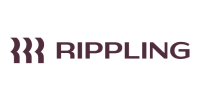
RIPPLING
Using Rippling, businesses can manage all of their HR, IT, and Finance in one global workforce platform, including payroll, benefits, computers, apps, corporate cards, and expenses. Connecting all business systems to a single source of truth for employee data enables businesses to automate all manual actions they normally have to take to make employee changes. For example, onboarding. Rippling allows you to set up payroll, health insurance, work computers, corporate cards, and third-party apps in just 90 seconds, such as Slack, Zoom, and Office 365.
Funding
![]()

DARWINBOX

RIPPLING
Rippling, the HR and IT management platform, has raised a lot of funding through various rounds. Here is a summary of their funding history:
- Seed Round (2016): The company raised $6.5 million in seed funding to launch its platform. The round was led by several notable investors, including Kleiner Perkins.
- Series A (2018): Rippling secured $45 million. This funding round was led by Kleiner Perkins and included participation from other investors like the Founders Fund.
- Series B (2019): Rippling raised $145 million in Series B funding. This round was led by Founders Fund, with participation from Kleiner Perkins and other investors.
- Series C (2021): The company closed a $250 million Series C round, valuing Rippling at $6.5 billion. This round was led by Greenoaks Capital, with additional participation from existing investors such as Kleiner Perkins and Founders Fund.
- Series D (2022): Rippling raised $500 million in Series D funding, bringing its valuation to $11.5 billion. This round was led by Sequoia Capital and included participation from other prominent venture capital firms.
Features
![]()

DARWINBOX
Training Management
Time Off Management
Recruiting Management
Performance Appraisal
Payroll Management
Onboarding
Employee Lifecycle Management
Employee Database
HR Compliance Management
Time & Attendance Management

RIPPLNG
Training Management
Time Off Management
Recruiting Management
Performance Appraisal
Payroll Management
Onboarding
Employee Lifecycle Management
Employee Database
HR Compliance Management
Time & Attendance Management
Workflow Management
W-2 Preparation
Single Sign On
Social Sign On
Scheduling
Resume Parsing
Direct Deposit
Mobile Time Tracking
Multiple Billing Rates
Dashboard
Market Shared
![]()

DARWINBOX
Darwinbox has reviews in the following markets:
- Employee Performance Management Systems

RIPPLING
Rippling has reviews in the following markets:
- Professional Employer Organization (PEO) Providers
- Employer of Record (EOR)
- Cloud HCM Suites for Regional and/or Sub-1,000 Employee Enterprises
- Expense Management Software
Categories
![]()

DARWINBOX
Darwinbox is categorized as:
- Performance Management
- Recruiting Automation
- HR Analytics
- Human Resource Management Systems
- Core HR
- Applicant Tracking Systems (ATS) Onboarding
- Payroll

RIPPLING
Rippling is categorized as:
- Employer of Record (EOR)
- Global Employment Platforms (GEP) Contractor Payments
- Contractor Management
- HR Compliance
- Spend Management
- Multi-Country Payroll
- Time & Attendance
- PEO Providers
- Training Management Systems
- Endpoint Management
- Password Manager
- Benefits Administration
- Corporate Learning Management Systems Identity and Access Management (IAM)
- User Provisioning and Governance Tools
- Single Sign-On (SSO)
- Time Tracking
- Expense Management
- Workforce Management
- Mobile Device Management (MDM)
- Workforce Planning
- HR Analytics
- Human Resource Management Systems
- Core HR
- Applicant Tracking Systems (ATS) Onboarding
- Payroll
Pros & Cons
![]()

DARWINBOX
Pros & Cons of Darwinbox HR Software:
- Comprehensive HR Solutions: Darwinbox offers an all-in-one suite that covers various HR functions like recruitment, onboarding, payroll, and performance management, making it a versatile tool for managing all HR processes in one place.
- User-Friendly Interface: The platform is designed with an intuitive and easy-to-navigate interface, enhancing the user experience for both HR professionals and employees, and minimizing the learning curve.
- Advanced Analytics and Reporting: Darwinbox provides robust analytics and reporting capabilities, giving organizations valuable insights into workforce trends, performance metrics, and other critical data to support data-driven decision-making.
- Mobile accessibility: The mobile application allows employees and managers to access key HR functions on the go, such as leave requests and payroll details. This boosts flexibility and convenience.
- Global reach: With support for multiple languages and currencies, Darwinbox is well-suited to multinational organizations, accommodating diverse and global workforces effectively.
Top 5 Cons of Darwinbox HR Software:
- Implementation complexity: Initial setup and customization can be complex and time-consuming, requiring significant effort from HR teams or external consultants.
- Cost: The pricing can be high, especially for smaller organizations or startups, and costs may increase with the addition of more features or modules.
- Learning curve: The extensive range of features and customization options may lead to a steep learning curve, necessitating additional training and support for effective utilization.
- Performance issues: Users have occasionally reported performance issues such as slow loading times or system glitches, which can impact the overall user experience.
- Customer Support: There have been reports of challenges with customer support responsiveness and issue resolution. The quality of support varies depending on the service level and complexity of the problem.

RIPPLING
Pros & Cons of Rippling HR Software:
- Unified HR and IT Management: Rippling integrates HR and IT functions into a single platform, allowing organizations to manage everything from employee onboarding to device management seamlessly. This unified approach can streamline processes and reduce administrative overhead.
- Automation Capabilities: The software offers strong automation features, such as automated onboarding workflows, benefits administration, and payroll processing. This can save time and minimize errors by reducing manual data entry and repetitive tasks.
- Customizable Solutions: Rippling provides extensive customization options, allowing businesses to tailor the platform to their specific needs. This flexibility is beneficial for companies with unique HR and IT requirements.
- User-Friendly Interface: Rippling is known for its intuitive and easy-to-navigate interface. This enhances user experience and reduces the learning curve for both HR professionals and employees.
- Comprehensive Integration: The platform integrates with a wide range of third-party applications and systems, including popular productivity tools, accounting software, and more. This helps ensure a seamless flow of data across different business functions.
Top 5 Cons of Rippling HR Software:
- Cost: Rippling’s pricing can be on the higher side, particularly for smaller organizations or startups. The costs can also escalate with the addition of more advanced features or modules.
- Complexity for Smaller Businesses: The breadth of features and integration capabilities might be overwhelming for smaller businesses that may not need all the functionalities offered, potentially making the platform more complex than necessary.
- Learning Curve: Despite its user-friendly design, the extensive range of features and customization options can present a learning curve. Organizations may require additional training and support to fully leverage the platform’s capabilities.
- Performance Issues: Some users have reported occasional performance issues such as slow system response times or glitches. These issues, though generally addressed by Rippling, can impact the overall user experience.
- Customer Support: There have been mixed reviews regarding customer support. Some users have experienced challenges with support responsiveness and resolution times, which can be a concern for organizations needing timely assistance.
Specifications
![]()

DARWINBOX
Who uses Darwinbox
- Startups
- SMEs
- Enterprises
Desktop Platforms:
- Web App
- Windows
Mobile Platforms:
- iOS
- Android
Languages:
English
Regional Restrictions:
India, Singapore, Indonesia, Malaysia

RIPPLING
Who uses Rippling
- Startups
- SMEs
- Enterprises
Desktop Platforms:
- Web App
- Windows
- Macintosh
Mobile Platforms:
- iOS
- Android
Languages:
English
Regional Restrictions:
No restrictions.
F.A.Q
![]()

DARWINBOX
What is Darwinbox and how does it work?
Darwinbox is an integrated HR software platform designed to streamline various HR functions. It works by centralizing HR processes such as recruitment, onboarding, payroll, and performance management on a single platform. This enhances efficiency and data consistency.
What features does Darwinbox offer?
Darwinbox features recruitment management, onboarding automation, payroll processing, performance management, employee engagement tools, leave management, and detailed HR analytics.
How much does Darwinbox cost?
Darwinbox costs depend on factors like the size of the organization, the number of users, and the specific features required. For precise pricing details, contacting Darwinbox for a custom quote is recommended.
Is Darwinbox suitable for small businesses?
Darwinbox is scalable and can be adapted for businesses of all sizes. While it offers extensive features that may benefit larger organizations, small businesses can also leverage its capabilities depending on their needs.
How secure is Darwinbox?
Darwinbox employs robust security measures, including data encryption, secure access controls, and regular security audits. This is to ensure sensitive employee data protection and compliance with data privacy regulations.
Can Darwinbox integrate with other systems?
Yes, Darwinbox supports integration with a variety of third-party applications and systems, including accounting software, productivity tools, and other HR-related platforms to ensure seamless data flow.
Does Darwinbox offer a mobile app?
Darwinbox provides a mobile application that allows users to access HR functions such as leave requests, payroll information, and performance management on the go.
What is the Darwinbox implementation process?
The implementation process involves setup, configuration, data migration, and user training. The timeline can vary based on HR processes and customization needs complexity.
Does Darwinbox provide customer support?
Darwinbox offers customer support through various channels, including email, phone, and live chat, as well as training resources and documentation to assist users.
Can I get a demo or trial of Darwinbox?
Yes, Darwinbox typically offers demos and trials for prospective customers to explore the platform’s features and functionality before committing. Contact them to arrange a demo or trial.

RIPPLING
What is Rippling HR software?
Rippling is an all-in-one HR and IT management platform designed to streamline and automate various business functions, including employee onboarding, payroll processing, benefits administration, and device management. It integrates HR and IT operations into a single, unified system.
What are the key features of Rippling?
Key features of Rippling include:
- Unified HR and IT management
- Automated onboarding and offboarding
- Payroll processing and tax compliance
- Administrative duties (healthcare, retirement plans, etc.)
- Employee self-service and digital forms
- Performance management and feedback tools
- Integration with a wide range of third-party applications
How much does Rippling cost?
Rippling’s pricing varies based on factors such as company size, users, and the specific features or modules selected. For accurate pricing details, contact Rippling directly for a personalized quote or demo.
Is Rippling suitable for small businesses?
Yes, Rippling is suitable for businesses of all sizes, including small and medium-sized enterprises (SMEs). Its scalable features and user-friendly interface adapt to various business needs.
How does Rippling ensure data security?
Rippling implements robust security measures, including data encryption, secure user authentication, and regular security audits, to protect sensitive employee and organizational data.
Can Rippling integrate with other software systems?
Rippling offers extensive integration capabilities with a range of third-party applications, including accounting software, productivity tools, and other business systems, ensuring a seamless flow of data across platforms.
Does Rippling have a mobile app?
Yes, Rippling provides a mobile app that allows employees and managers to access HR functions. This includes viewing payroll details, submitting leave requests, and managing benefits. This is done from their smartphones or tablets.
What is the Rippling implementation process?
Implementation typically involves system setup, data migration, configuration, and training. The timeline can vary depending on the complexity of the setup and customization required.
What kind of customer support does Rippling offer?
Rippling offers customer support through multiple channels, including phone, email, and live chat. They also provide resources such as knowledge bases and training materials to assist users with the platform.
Can I request a demo or trial of Rippling?
Yes, Rippling usually offers demos and trials for prospective customers to explore the platform’s features and functionality. Contact Rippling directly to arrange a demo or trial to better understand how the software fits your business needs.
Choosing the Best HR software is pivotal for any organization. Both Rippling and Darwinbox offer robust solutions to streamline HR and IT management.
Rippling excels with its unified platform that integrates HR and IT functions, advanced automation capabilities, and extensive customization options. It is ideal for companies looking for a comprehensive solution that handles everything from payroll to device management within a single interface. However, its high cost and potential complexity for smaller businesses might be considered.
Darwinbox, on the other hand, stands out with its user-friendly design, powerful analytics, and global reach. It’s all-in-one HR suite is well-suited to businesses seeking a versatile platform that manages various HR processes while providing valuable insights into workforce data. The learning curve and cost are factors to consider, particularly for smaller organizations.
Ultimately, the choice between Rippling and Darwinbox depends on your organization’s specific needs, budget, and growth plans. Rippling might be the go-to for those needing an integrated HR and IT solution with robust automation, while Darwinbox could be more appealing if you prioritize a user-friendly interface and global functionality.
By carefully evaluating these aspects, you can select the platform that best aligns with your business goals and enhances your HR operations. Whether you prioritize integration, customization, or user experience, both Rippling and Darwinbox offer compelling features to support your organization’s success.
